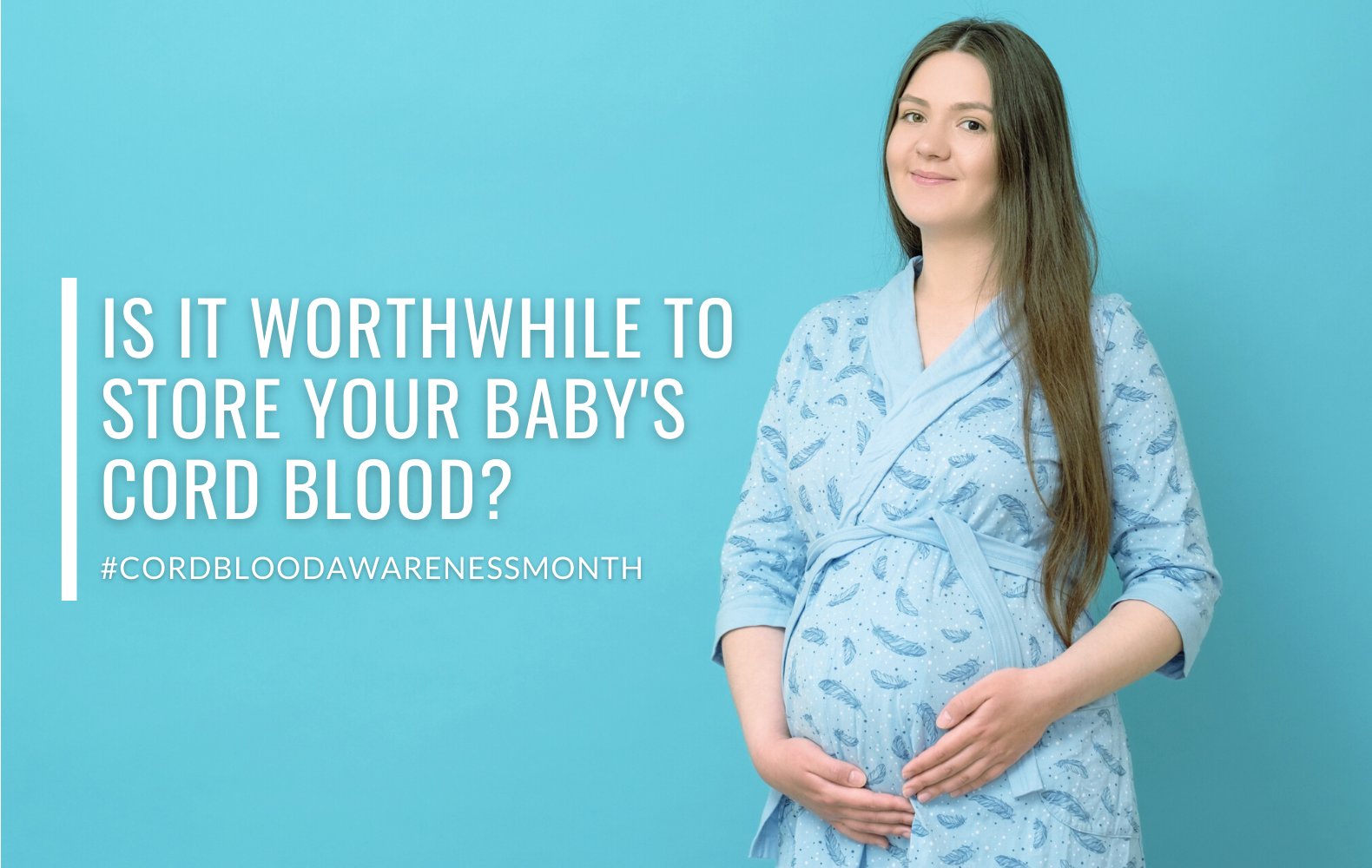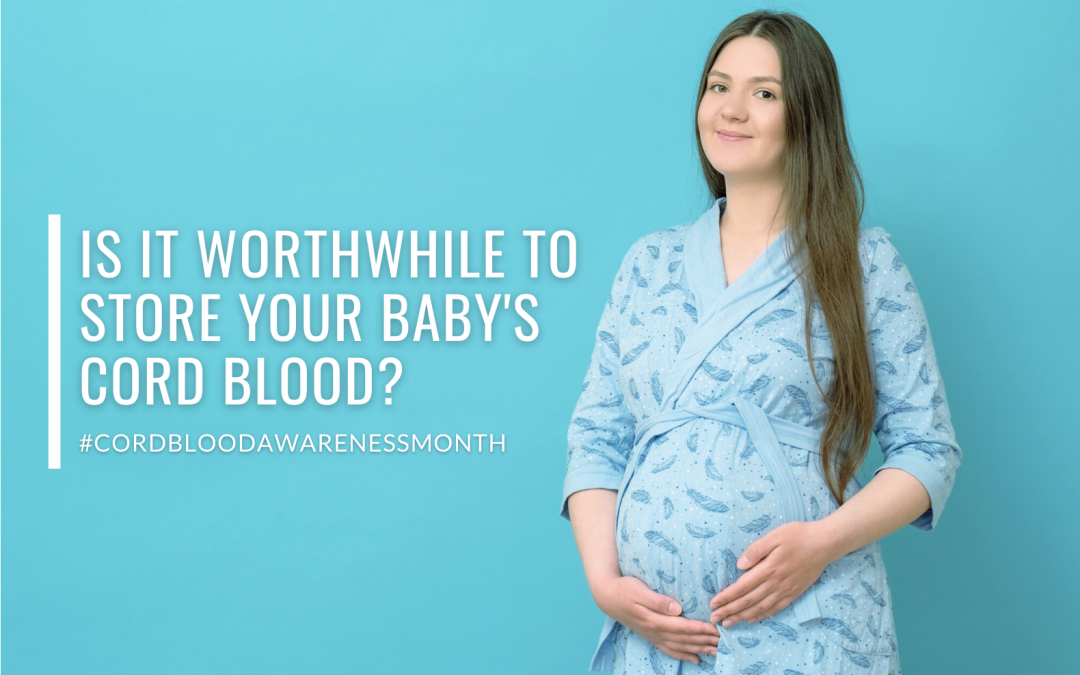
You might have heard about the incredible medical breakthroughs involving the use of a newborn baby’s umbilical cord stem cells. These stem cells are already used to treat over 85 different illnesses and there is a lot of exciting new research into the regenerative power of stem cells (Moise, 2005).
However, many expecting parents have a lot of unanswered questions about the cord blood banking practice and whether it is worthwhile to store the cord blood stem cells of their baby. So to help you understand the benefits of saving the umbilical cord blood stem cells, we’ll answer some of the most frequently asked questions by parents who are new to the idea of cord blood banking.
What diseases can be treated with umbilical cord blood stem cells right now?
One of the major stem cell types found in the cord blood is the Hematopoietic stem cells (HSCs), which are often used in current stem cell treatments. HSCs have the ability to differentiate into every type of functional blood cell and are capable of self-renewal (Seita & Weissman, 2010). That makes them ideal for treating illnesses where the body’s ability to generate healthy blood cells has been compromised. The many illnesses that HSCs are used to treat include many forms of cancer (including leukaemia and lymphoma), anaemia, immune system disorders and metabolic disorders.
Here are some of the diseases that could be treated with cord blood stem cells »
What kind of stem cell treatments may be possible in the future?
There are many exciting research projects which are attempting to develop stem cell treatments for diseases and injuries which were previously thought to be incurable. Many of these research projects use Mesenchymal stem cells (MSCs), another major stem cell types found in the cord blood. MSCs are a particularly useful type of stem cell because they can differentiate into many types of cells including adipocytes (fat cells), myocytes (muscle cells), osteoblasts (bone cells) and chondrocytes (cartilage cells) (DT, 2015). MSCs can also generate some growth hormones which are useful for promoting the regeneration of tissue.
MSCs may be useful for the treatment of many diseases and injuries including:
- Spinal injuries
- Alzheimers disease
- Parkinson’s diseases
- Amyotrophic Lateral Sclerosis
- Huntington’s disease
- Multiple Sclerosis
- Graft versus host disease
- Stroke
- Myocardial infarction
- Pulmonary fibrosis
- Acute liver failure
- Cirrhosis
- Rheumatoid arthritis
- Autoimmune diseases
- Cystic fibrosis
- Macular degeneration, Stargardt’s disease and retinitis pigmentosa
(Tanna & Sachan, 2015; Volarevic, Nurkovic, Arsenijevic & Stojkovic, 2014; Dazzi & Horwood, 2015; Ramsden et al., 2013; Dasari, 2014)
How long can you store the umbilical cord blood stem cells?
Theoretically, cord blood stem cells can remain viable for a long time if stored under the right conditions (Broxmeyer et al., 2011). Scientists have tested stem cells from cord blood that has been cryogenically frozen for up to 23.5 years and found that the stem cells maintained a high level of viability. Find out more »
Can anyone in my family use my baby’s umbilical cord blood stem cells?
There is a higher chance of stem cell compatibility between related people:
- A child has a 100% chance they are compatible with their own stem cells. Receiving your own stem cells in a transplant is called an autologous transplant.
- A sibling of a child has a 25% chance they will be fully compatible match with their sibling and 50% chance of a partial match.
Because of the many breakthroughs occurring in the field of stem cell research, stem cells may become an important biological asset for families. For example, if a parent is diagnosed with Alzheimer’s disease, the baby’s umbilical cord blood stem cells may be crucial in treating the condition.
Is it true that umbilical cord blood stem cells are less likely to be rejected?
Yes. Because they are immature cells, cord blood stem cells produce less immune cells and are less likely to be rejected by the recipient’s immune system. They are also less likely to trigger Graft vs Host Disease (GvHD), where the donor’s cells attack the recipient’s cells after a transplant. If someone in your family becomes ill and requires a stem cell transplant, having a source of stem cells that are less likely to be rejected is very important. Learn more »
What are the chances that my child will use their own umbilical cord blood stem cells?
There are widely varying estimates of how likely it is that your child may need their umbilical cord blood stem cells in their lifetime. The chances that your child may suffer from the diseases currently treated with stem cells and will require their own cord blood stem cells range from 1 in 200 (Nietfeld, 2008), to between 1 in 400 and 1 in 200,000 (Sullivan, 2015).
For many parents, cord blood banking is seen as a form of biological insurance for their child. If their child is struck down with leukaemia or an immune system disorder, they will be in the best position possible to survive. Other parents are looking at future stem cell research developments and decide to store the cord blood stem cells of their newborn for the benefit of the whole family. If the ongoing stem cell research projects come to fruition, your child’s stem cells may be used to treat many illnesses and injuries that the family may encounter.
Choosing to store the cord blood stem cells for your children could become a very important decision that saves the life of a loved one.
Sources:
- Broxmeyer, H., Lee, M., Hangoc, G., Cooper, S., Prasain, N., & Kim, Y. et al. (2011). Hematopoietic stem/progenitor cells, generation of induced pluripotent stem cells, and isolation of endothelial progenitors from 21- to 23.5-year cryopreserved cord blood. Blood, 117(18), 4773-4777. http://dx.doi.org/10.1182/blood-2011-01-330514
- (2015). Diseases Treated | Cord Blood Storage | CorCell. CorCell. Retrieved 11 October 2015, from corcell.com/benefits-of-umbilical-cord-blood/diseases-treated/
- Dasari, V. (2014). Mesenchymal stem cells in the treatment of spinal cord injuries: A review. World Journal Of Stem Cells, 6(2), 120. http://dx.doi.org/10.4252/wjsc.v6.i2.120
- Dazzi, F., & Horwood, N. (2015). Potential of mesenchymal stem cell therapy. – PubMed – NCBI. Ncbi.nlm.nih.gov. Retrieved 19 October 2015, from http://www.ncbi.nlm.nih.gov/pubmed/17906466
- DT, H. (2015). Umbilical cord tissue mesenchymal stem cells: characterisation and clinical applications. – PubMed – NCBI. Ncbi.nlm.nih.gov. Retrieved 12 April 2015, from http://www.ncbi.nlm.nih.gov/pubmed/23895058
- Moise K. J. (2005). Umbilical cord stem cells. Obstetrics and Gynecology, 106(6), 1393–1407 [PubMed]
- Nietfeld, JJ et al., (2008) Biol. Blood and Marrow Trans. 2008; 14:316-322.
- Ramsden, C., Powner, M., Carr, A., Smart, M., da Cruz, L., & Coffey, P. (2013). Stem cells in retinal regeneration: past, present and future. Development, 140(12), 2576-2585. http://dx.doi.org/10.1242/dev.092270
- Seita, J., & Weissman, I. (2010). Hematopoietic stem cell: Self-renewal versus differentiation. WIREs Syst Biol Med Wiley Interdisciplinary Reviews: Systems Biology and Medicine, 640-653.
- Sullivan, M. (2015). Banking on cord blood stem cells. – PubMed – NCBI. Ncbi.nlm.nih.gov. Retrieved 19 October 2015, from http://www.ncbi.nlm.nih.gov/pubmed/18548085
- Tanna, T., & Sachan, V. (2015). Mesenchymal stem cells: potential in treatment of neurodegenerative diseases. – PubMed – NCBI. Ncbi.nlm.nih.gov. Retrieved 19 October 2015, from http://www.ncbi.nlm.nih.gov/pubmed/25248677
- Volarevic, V., Nurkovic, J., Arsenijevic, N., & Stojkovic, M. (2014). Concise Review: Therapeutic Potential of Mesenchymal Stem Cells for the Treatment of Acute Liver Failure and Cirrhosis. STEM CELLS, 32(11), 2818-2823. http://dx.doi.org/10.1002/stem.1818
Want to know how to store the cord blood stem cells of your baby?
Speak to one of our cord blood banking specialists ― 971 4 3116613 or send us an email

